The Science of Koji
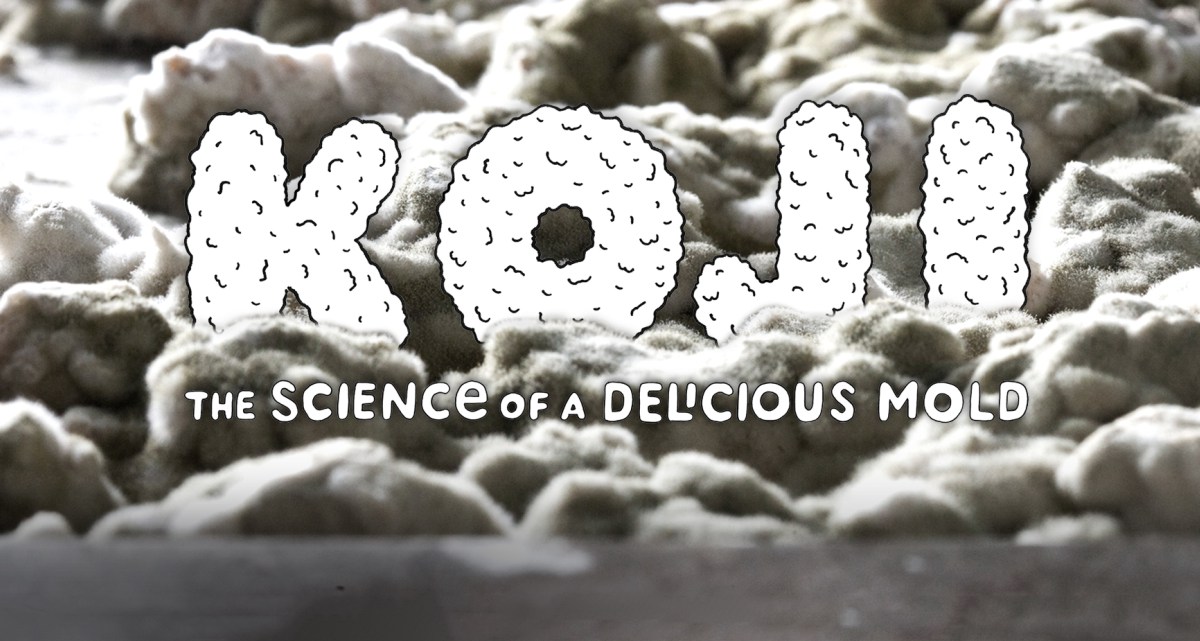
01
A Taste of Koji
The chop looked like nothing I’d seen. I could discern its shape—the bone poking out of the thick oval of meat—but it was covered with a pale gray-white fuzz, a Lilliputian moonscape of craters and mountains, darker gray rivulets dotting the surface. It didn’t look like meat. In fact, it looked like an overgrown pork chop–shaped piece of Camembert. And yet I couldn’t wait for it to be fried.
“I don’t think anyone’s ever been so excited to eat a fungus-crusted pork chop,” I confessed to chef Jeremy Umansky, of Cleveland, Ohio, who will open a Jewish-style deli called Larder in Cleveland next spring. Umansky had taken the fuzzy whitish meat out of the professional dehydrator wedged into the corner of his crowded home dining room to cook. “Except maybe you.”
I was about to taste something that few people have eaten because, as far as I can tell, Umansky may well be the only one to have created such a dish.
The whitish fluff, usually so unappetizing on a pork chop, was koji, an ancient mold, one humans in Asia domesticated for food perhaps as far back as 9,000 years ago. Though koji is not as famous in the United States as other microbes domesticated for food, such as those that beget beer, cheese, and wine, in Asia it’s legendary. It’s used to make soy sauce, Chinese fermented black bean paste, Korean fermented bean paste and rice wine, and Japanese miso and sake. The Brewing Society of Japan has proclaimed koji the country’s national mold. In the manga—a Japanese comic—called Moyasimon: Tales of Agriculture, one of the main characters is a perky golf ball–size talking koji spore.
Koji, or Aspergillus oryzae, flourishes in a hot, humid environment, as befits a mold that evolved in the Asian tropics. The spores first take root on moist, partially or fully cooked grains, releasing powerful enzymes called proteases (to break down proteins) and amylases (to break down starches) as they grow, converting the grain into sugar and using that sugar to fuel koji’s growth. The resulting koji-grain culture, rich with enzymes, is then mixed into a second product, such as soybeans. The proteases and amylases transform soybeans into entirely new products. Soy sauce and miso both rely on koji for their transmogrification.
But Umansky, by growing koji directly on a rice flour–dusted pork chop and leaving the mold on as a sort of breading, was exploiting koji’s magic in a manner far removed from its origins in Asia. He’s one of a small but growing group of American chefs who are discovering the power of this tiny microbe. They’re testing koji’s limits and creating new flavors for American diners.
02
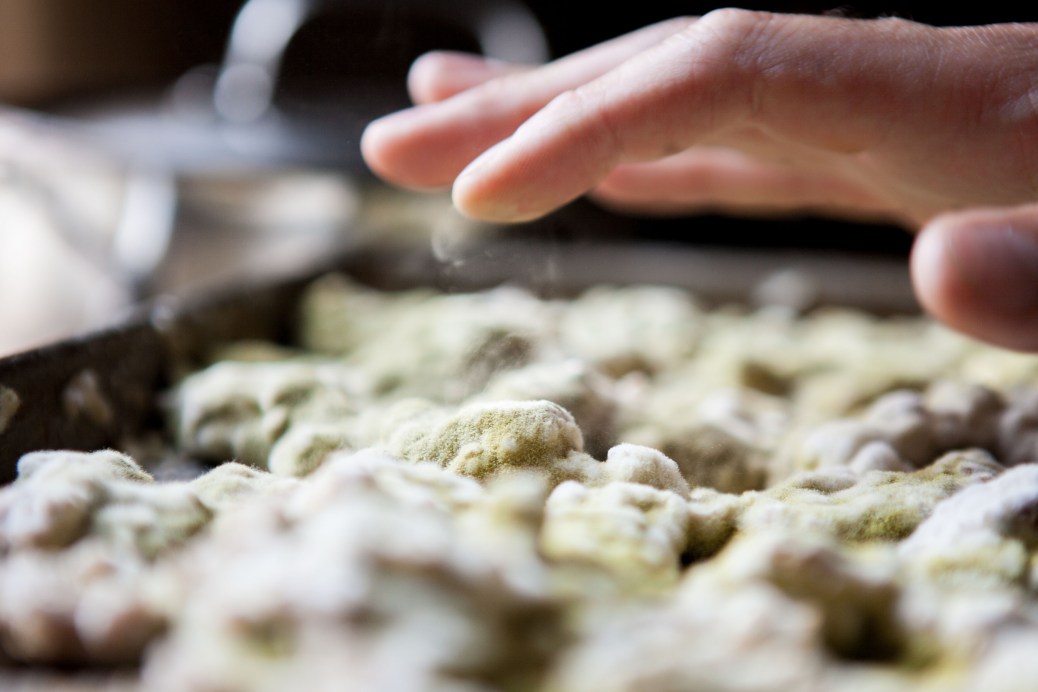
The Rise of Koji
Bits of pottery from 9,000 years ago hint at koji’s earliest adoption. On those remainders of life in early Neolithic northern China, scientists found traces of fermented rice, honey, and fruit, possibly a protosake. “And you can’t make sake without having the fungus present first,” says John Gibbons, who studies the genetics of evolution at Clark University, because rice’s sugars are too tightly bound up as starch, and yeast can’t ferment them. Scientists believe the original fungus that broke the rice down was Aspergillus oryzae or a close relative.
Gibbons imagines that what may have so captivated the ancient Chinese, why they let funky gray puffy spores grow unchecked on rice, was koji’s scent, an intoxicating mix of fruit and funk. The first time I smelled the spores fully inoculated in rice, the savory yet grapefruity notes bewitched me. I wanted to bury myself in the mold. I’d buy the perfume.
But there’s something strange about koji: Its closest relatives are deadly. Aspergillus fumigatus, which floats in the air, doesn’t affect most healthy people, but for immunocompromised hospital patients, the fungus kills more than half the people it infects when it’s breathed in or lands on a surgical site. Aflatoxin-producing Aspergillus strains can infect grains, peanuts, and soy; aflatoxin is a potent carcinogen, and the U.S. Food and Drug Administration regulates it as a food contaminant.
These nasty, poisonous chemicals released by Aspergillus are known as secondary metabolites; that is, while proteases and amylases help the microbe break down starch or beans, those secondary metabolites kill off competitors. And yet in koji, the genes that code for the poisonous stuff have been completely turned off, and only the useful compounds—useful to both fungi and humans—remain.
Gibbons isn’t quite sure why this happened. After all, the toxic cousins also have a sweet smell, and early humans would have likely learned to throw out a damp pile of grains that had become infected. But at some point, someone decided not to. “That’s one of the big mysteries in fermentation history,” says Gibbons.
Gibbons is attempting to re-create koji domestication in his lab in order to understand its evolution, which traits were most useful and were thus propagated, and how koji shed its toxins. Whatever the case, over the years, humans did grow and refine strains of koji, much as they bred corn and tomatoes. Since that first rice wine, and over the ensuing centuries, people living in what are now China, Japan, and Korea passed down useful spores, choosing the ones most likely to produce the desired foods. In doing so, they figured out how to grow varieties of koji to help produce alcohol or soy sauce or fermented bean paste. And they changed the genetics of the fungus as they did so.
The early Chinese who decided not to toss out their moldy rice allowed Aspergillus to free up sugar for yeast to then ferment into booze. Over the millennia, koji’s fame also rose for its powers to convert proteins into umami-rich substances like soy sauce and miso. But koji’s first significant introduction in the United States was, like its discovery in ancient China, linked to the production of alcohol.
03
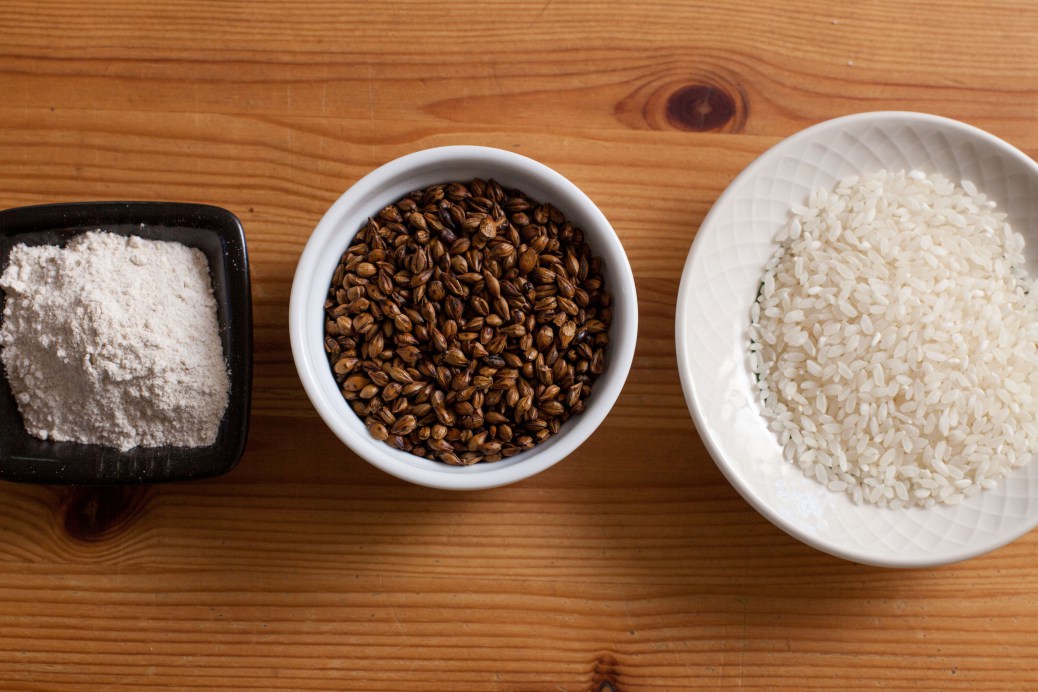
The Father of American Koji
Jokichi Takamine, a Japanese chemist from a sake-making family, moved to New Orleans in 1884 to represent Japan at the city’s World Cotton Centennial, that year’s World Fair. He fell in love with a local wealthy white woman and they married, an unusual pairing for the time. In addition to his social iconoclasm, Takamine was a shrewd businessman who wanted to promote Japanese culture in the United States. His successes are too numerous to list in a story about koji: He patented the first hormone, adrenaline, which made him fabulously wealthy. With the money from that and other successful businesses, he financed the Japanese government’s gift of cherry trees, whose blossoms still grace Washington, D.C.’s tidal basin every April.
Takamine also introduced Americans to koji. In Japan, he had patented a process to grow koji on wheat bran, and he realized that koji and the enzymes it produced could dramatically speed up the whiskey-making process, its enzymes freeing sugar much faster than traditional malting. So Takamine partnered with his father-in-law in an attempt to transform the whiskey business.
Joan Bennett, professor at Rutgers University and former president of the American Society for Microbiology, believes that Takamine was not exactly welcomed into the world of 1800s American whiskey. Bennett has become somewhat obsessed with the Takamine story and has even written a short piece about him in Inoculum, the newsletter of the Mycological Society of America.
Bennett first discovered Takamine three decades ago, when she was a young scientist, writing her first review article on the genus Aspergillus. While amassing dates on great moments in the fungus’s history in microbiology, she discovered, to her surprise, that Takamine had patented the first fungal enzyme from Aspergillus. Six months later, wandering through the stacks at Tulane University’s library, where she worked at the time, Bennett randomly came across a narrow book about Takamine and wondered what could have been written about the Aspergillus patent holder. She discovered a vanity biography commissioned by his wife, Caroline, after he died.
Takamine did leave one koji-size mark on American history: The patent that Bennett discovered in her research was arguably the first biotechnology patent in the United States, given to him in 1891 for an enzyme created by koji he named Taka-diastase. This is the same enzyme that failed Takamine in the whiskey business, but he thought it could also be useful in aiding digestion, perhaps, says Bennett, due to a popular theory at the time that indigestion was caused by too much starch. Takamine used that enzyme to create and sell a popular Alka-Seltzer-like digestive aid called, appropriately, Takadiastase, which was a hit in late 1800s America and is still popular today in Japan. Bennett calls Takamine a “huge and somewhat overlooked figure in the history of biotechnology.”
The use of Aspergillus in biotech has continued since Takamine’s discoveries. The cholesterol-lowering drug Lovastatin is produced by a koji cousin. Aspergillus niger, used to ferment pu-ehr tea, is also employed industrially to produce citric acid.
But, other than the handful of companies making soy sauce and miso in the United States, koji’s potential as a creative ingredient in food fermentation and transformation has largely evaded American chefs. Until recently.
04
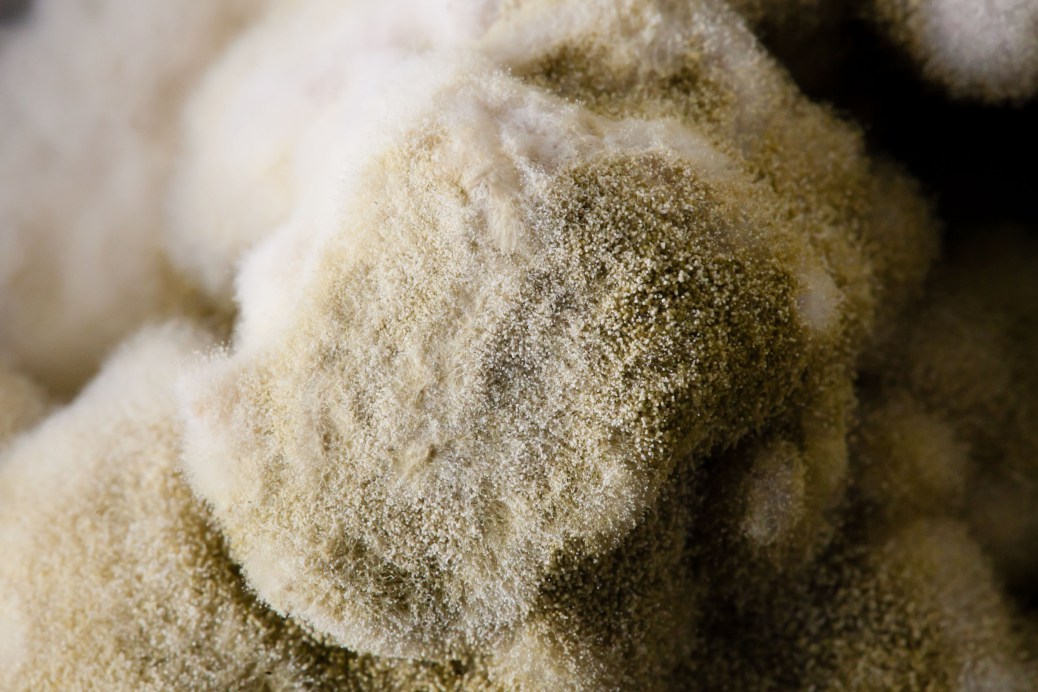
Koji in the USA
A couple of years ago, Umansky was working with chef Jonathon Sawyer at Trentina in Cleveland when Sawyer had a request. He wanted to make miso in-house, and he wanted Umansky to oversee it.
Miso is often a jumping-off place for koji, and it can provide quite a field for experimentation. David Chang at New York’s Momofuku, for instance, has made pistachio miso and chickpea miso—he calls them hozon, a name he coined, because, he says, they’re not traditional soybean-based miso. Rich Shih, engineer, tinkerer, and koji explorer in Boston, taught chef Jeremy Kean at Brassica Kitchen in Boston to mix koji into ricotta and then ferment it, creating a crumbly, salty, deeply umami Parmesan substitute.
Umansky knew nothing about koji at the time, but he came to the task equipped with some rather unusual skills. A childhood physical disability left him walking in braces until age six. That, coupled with an early diagnosis of Tourette syndrome and learning disabilities, meant when he was home, he indulged his early curiosity by reading dozens of volumes of encyclopedias.
He’s also cooked throughout his life, following in the footsteps of his grandmother, who was a well-respected kosher caterer in Cleveland. By his bar mitzvah at age 13, he was already spending every weekend by her side in the catering kitchen. And he’s long been fascinated by the natural world. In his teens, he bought crickets at the pet store and roasted them to feed his wary family.
By his 20s, Umansky fell in love with foraging and with mushrooms. Just as he read encyclopedias to fulfill his curiosity, Umansky dove into the science of fungi, reading scores of scientific papers. And so when Sawyer asked Umansky to make miso, he immediately began collecting any information he could find on koji as well. He learned that, in Japan, they carefully steam the rice to a not-fully-soft state, where the rice is cooked but each grain remains separate from the other before mixing in the koji spores.
“That just didn’t make sense, knowing what I know about fungi,” he said. “There’s a lot going on, but, simplistically, fungi grow everywhere.” He was already growing or foraging more than 100 species of mushrooms. “I realized I could probably hack this koji thing,” he said. So he took a batch of spent, mushy rice, cooked to provide starch for a vegetable broth, “to find a way to work with koji with things that we were getting rid of.” The koji flourished on the mushy substrate.
As Umansky learned more about koji’s use in Japan, he came to recognize and honor the Japanese traditions that have resulted in specific steps for the microbe’s production, though these vary from locale to locale, and depend on the desired food. “If you’re a couple of degrees off, it can have an impact on your final product,” he said, because how the koji is grown dictates just what enzymes are created in what proportions, and that affects the flavor of, say, a particular sake. “In Japan, there are some products that have been made a specific way for centuries.” But he saw room for improvisation.
05
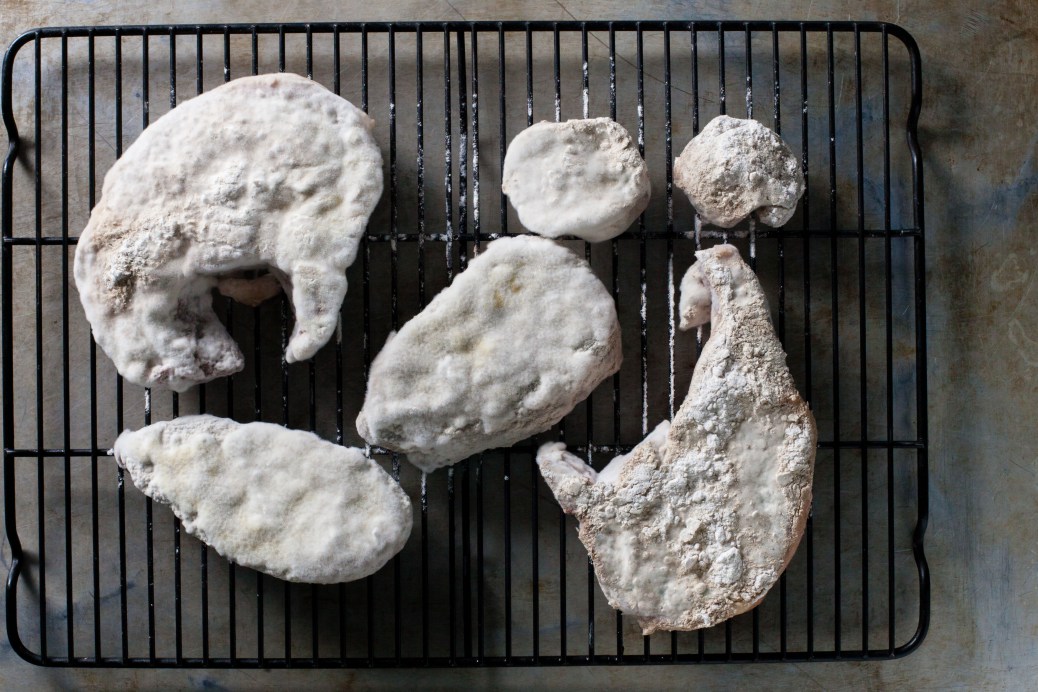
New Uses for Old Mold
Trentina had recently purchased a dehydrator, and Umansky realized the temperature control and the circulating fan made it a perfect home for koji. He controlled the humidity by wrapping the tray of wet rice and spores in plastic. The result: a perfectly warm, humid environment, between 70 and 90 degrees with about 90 percent humidity. The koji felt right at home.
Then he noticed the rice noodles in the pasta extrusion machine and wondered if koji could grow directly on moistened rice flour, rather than grains of rice? That worked, too, and didn’t seem to harm or change the microbe’s aroma and growth.
The sweetness in the koji aroma reminded Umansky of the sweetness of scallops, which led to his next experiment: If he could grow koji directly on rice flour, could he bread a piece of protein in rice flour and then grow the koji on the protein? What about scallops? How would koji’s enzymes affect the meat? So he dusted a scallop with rice flour, spread the spores atop it, and incubated the seafood in the dehydrator. Scallops spoil much more quickly than chicken or steak, “so I knew that if I could hold it at 80 degrees for 36 hours and have it not spoil, I might be on to something cool.”
When he took it out, the scallop was covered with fuzz. It had none of the hallmarks of spoilage, no off colors or smells. Instead, he said, the smell was amazing, an amalgam of the sweetness of koji plus a hint of the sea. He cooked the scallop; its flesh had cured and firmed. And it was delicious.
Umansky moved on from scallops to growing koji on pork and beef. One discovery happened by accident—he left a piece of eye round, a tough cut from the rear leg of the cow, curing with rice flour and koji for five days. When he remembered the meat, it had completely dried out and was fully tenderized. “It hadn’t even been a full week,” he said, as opposed to the usual three to six weeks it would take to make traditional charcuterie. He realized that koji’s enzymes can cure and tenderize meat much faster than Western techniques. (Traditional Western techniques, thousands of years old, involve salt to dehydrate the meat and kill harmful bacteria, as well as other substances such as nitrites and nitrates, to contribute the reddish color as well as develop cured flavors.) “I began culturing whatever I could get my hands on, from lamb tenderloins to chicken and beef to llama,” he said.
He’d prepared some for me to try. He sliced off a wine-red sliver of cured eye round, which would usually be too tough for such treatment. Instead, the rich meat had a perfect slightly chewy yet tender charcuterie texture. It was achieved in only four days, instead of four weeks.
And then there was that moldy pork chop. Umansky melted a chunk of butter in his well-used frying pan and gently slid the pork chop into it, spooning the bubbling butter repeatedly over the top of the chop as it browned. I could smell yeast and funk and sweetness. “Could the yeasty smell come from the rice flour?” I asked.
He allowed that it could, in part, but the koji had nearly entirely consumed the flour already. These scents were almost entirely produced by the koji itself.
I’ve certainly eaten pork chops before, and I know they can be a delight. But this was nothing like those pork chops past. The koji crust was crispy, savory, and yet sweet. And the proteins in the meat itself had been partially transformed by the microbe, producing a new dictionary of flavors. I tasted the koji-crusted meat, I tasted the meat without the crust. I tried repeatedly to find words for the flavors, falling back on the tired “umami” and “sweet” and “aromatic.” Finally, uncharacteristically tongue-tied, I confessed I felt like I was eating the most delicious junk food, one made of pork, fungus, and butter. I kept reaching for more. In between bites, I sheepishly admitted that I was already sad, because I might never eat koji-crusted meat again.
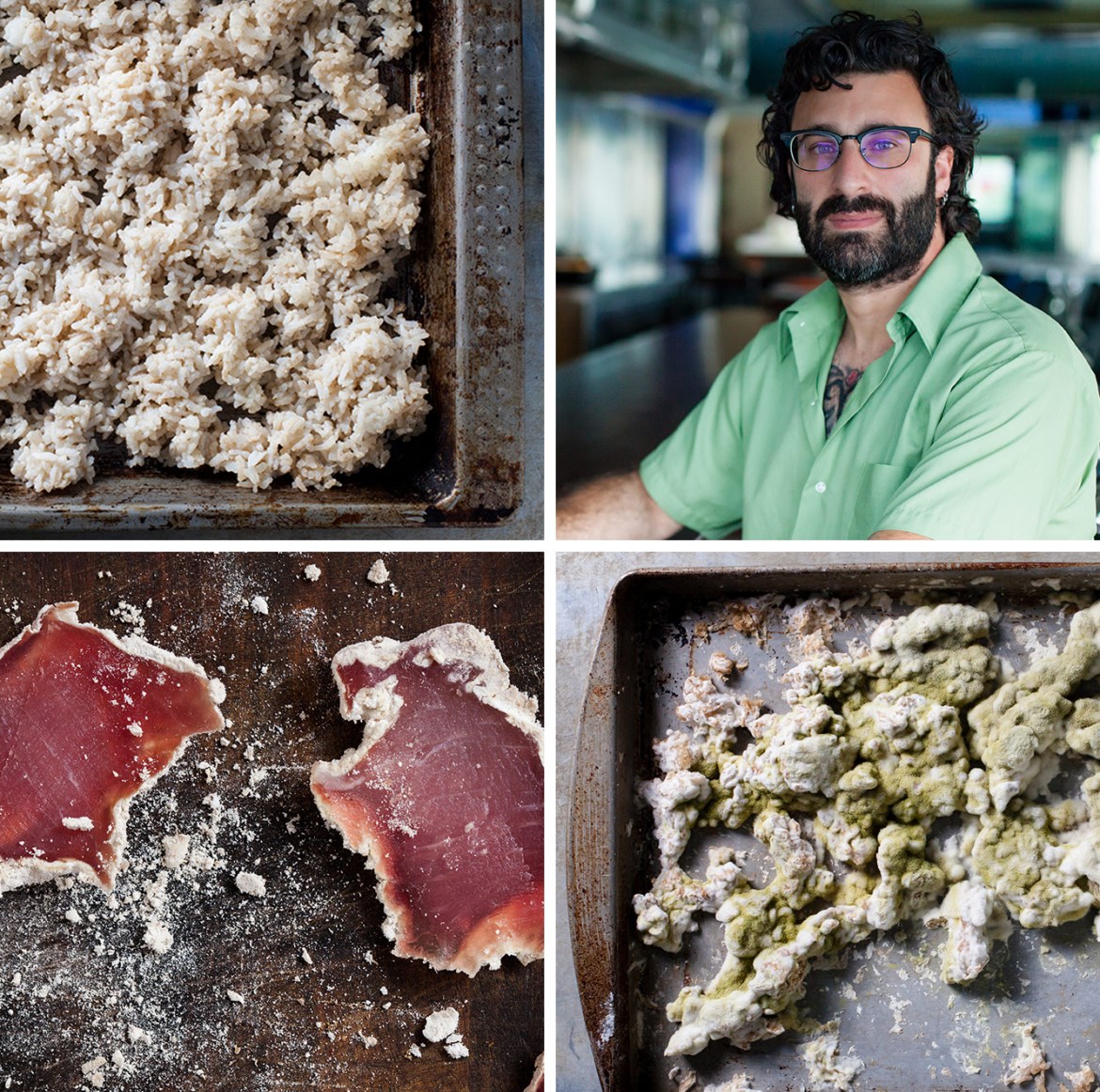
Umansky tried to empathize, but couldn’t. “I almost never feel that way, because I know I can re-create most foods at home,” he said.
I’m a decent cook, but I knew I’d never re-create this dish. I don’t have a professional dehydrator. And I’ll likely not find Boston-based chefs employing this technique in their restaurants. This is in part because the technique that Umansky derived to grow koji directly on meat isn’t quite legal, at least not if the meat’s offered for sale: He’s holding meat at about 80 degrees for 48 hours or more. At those temperatures, meat generally spoils; meat is usually cured below 50 degrees, often below 41. And so the technique doesn’t meet health department standards. He’s in discussions both with his lawyers and with the local health department. “What we really need is a bona fide koji research lab,” he said, in order to prove food safety. Though not all his meat curing experiments proved successful right from the start, Umansky says that, having refined the process, he’s demonstrated that it’s safe “through eating it and continuing to use it, but we haven’t proven it safe in the eyes of the law.”
06
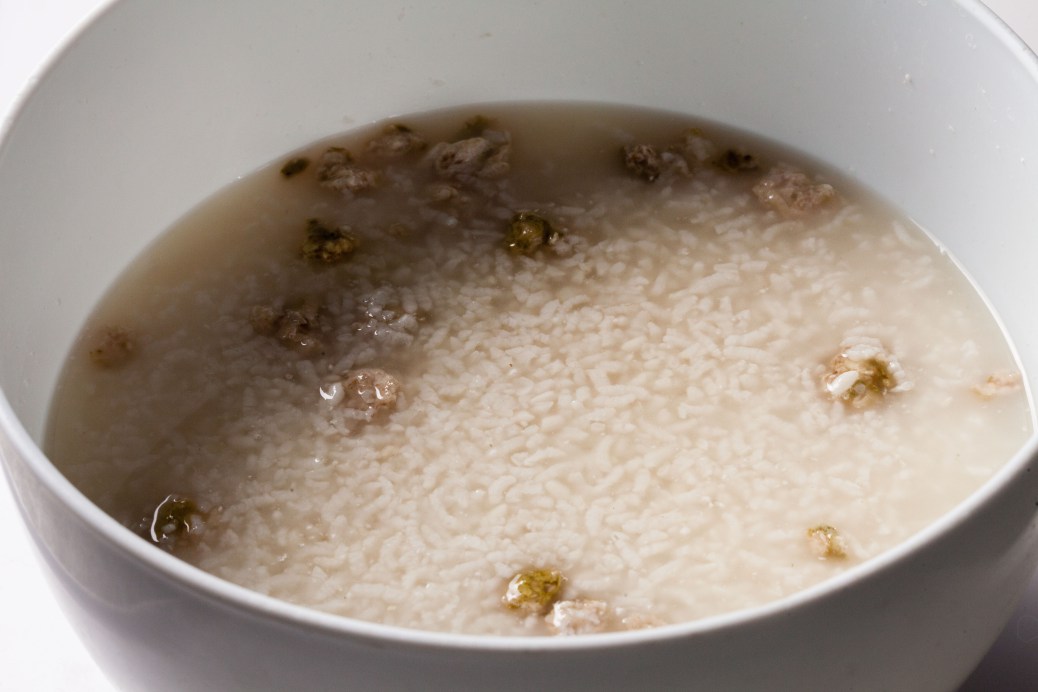
The New Frontier
But there are a number of ways he’s exploited koji’s transformational enzymes that could be useful—and legal—both in a restaurant and at home. Shio koji (which can be purchased online or made at home, is basically koji inoculated on rice, or koji rice, plus a salt solution) and amazake (a sweeter combination of koji rice and water) both work as marinades and ingredients. Umansky uses amazake as an accelerated sourdough starter, and he’s created an airy bread of 50 percent rye flour, far lighter than the dense, heavy bread that would usually result from such grain. He had me taste chicken thighs side by side, one plain and one marinated for a few hours in a koji solution; the koji one had a deep burnt-caramel skin, softer, juicier flesh, and a faint hint of a pleasant cheesy funk.
Cortney Burns, co-chef of Bar Tartine in San Francisco, marinates nearly all protein at the restaurant in shio koji, including her roast chicken. She became fascinated with koji about five years ago. “I knew it was the basis for umami,” she said, and so she and her co-chef, Nick Balla, began making koji, miso, and amazake in-house, “as a way to understand it better.” In addition to marinating meat, she’s used shio koji as a flavoring element in vegetable dishes for both the saline and umami notes. She’s dehydrated it to use as a salty-sweet condiment. Burns has pureed koji rice and used it as a sweetener in ice cream. “It’s like cheating!” she says, of how versatile koji products are and the complex flavors they impart.
Koji’s sweetness appealed to Kevin Fink, chef and owner of Austin’s Emmer and Rye. During his sojourn at the Nordic Food Lab in Denmark, he tried inoculating koji on a pork head terrine; the koji survived but didn’t particularly flourish. Since then, at his own restaurant, he’s experimented further, growing koji on a variety of grains and then turning those koji grains into griddle cakes. Fink, named one of Food and Wine’s Best New Chefs in 2016, served a dessert at the Food and Wine Classic festival in Aspen made of Sonoran wheat koji cake, cultured and baked into a cookie, as an ice cream sandwich.
“The koji allowed us to create a conduit of flavor that was much more floral than the other components we could get in Texas,” Fink said. “The development of flavors you can get from it are unbelievable. It’s almost champagne-y up front.”
Fink, who’d already been growing koji at his restaurant, learned the dehydrator trick from Umansky to grow koji in greater quantities. That solved one problem. And koji had already solved another problem for Fink. In making pasta, he had a huge amount of leftover egg whites. So he’d turned for help to Jason White, chef, forager, and fermentation expert, who’d helped Fink set up his foraging and fermentation larder.
White had long been fascinated with koji, with its flexibility and with the diversity of products it helps produce. And, as it turned out, he’d already considered how koji could transform the vast quantities of egg whites that most restaurant kitchens produce. The proteins available in egg whites seemed to him to be “dying to interact with koji.” White realized with soy that koji breaks proteins down into flavorful amino acids that produce the characteristic umami flavor. He thought the same technique should work with high-protein egg whites as well.
White tweaked the process. To make soy sauce, koji is grown on a mash of wheat, soy, and salt, with water added later in the process, at which point other microbes colonize and ferment the brew. The resulting amino-rich liquid is strained out. To ferment egg whites, White inoculated wheat, and then incorporated the koji wheat into an egg white–brine mixture. The proteases in the koji wheat break down the proteins in egg whites, freeing them up for a secondary fermentation over three months, similar to the six-month process used to make soy sauce.
The end result: a white amino sauce, similar to soy sauce and with the exact same consistency, but with, White says, a nutty, warm, sweet koji aroma. White thinks the sauce is “superamazing,” and Fink agrees—he considers it a brilliant invention. Fink since used the egg white–koji sauce to dress meat and in marinades and vinaigrettes. White has also created a bread-based amino sauce, inspired by a report he read about an all-female microbiology program in Japan in the 1940s, where the microbiologists inoculated bread crusts with Aspergillus and mixed them into a brine solution to ferment.
Umansky, who recently went down to visit Fink in Austin, loves when koji enthusiasts share tips and ideas. At a recent Larder preopening pop-up, Umansky served diners modern versions of Jewish deli favorites, many of which incorporated koji: shio koji–cured lake trout, an updated version of gravlax, as well as amazake-cured pickles, and koji mixed directly into bread dough. The koji carrots fascinated me. They had the preserved crunch of a pickle, but lacking the overpowering flavors of either salt or vinegar, they tasted more purely of carrots than any pickle I’d eaten.
Personally, I’ve cured New England ocean perch at home in shio koji for a few hours before briefly cooking it. The result was astounding; shio koji transformed a tasty but mild fish into something resembling the pricey miso black cod found at Japanese restaurants.
Umansky has dreams for koji. He imagines it could be used to turn cheaper or unused cuts of meat into inexpensive jerky. He’d love to get his hands on raw cacao and coffee beans—before they’re dried and cured—and use koji to cure them. “I get the feeling we’re going to get flavor compounds that we don’t see through traditional methods,” he said. Like nearly all cooks new to koji, he’s become an impassioned, even obsessed, fan, and he expects others will soon catch on. “I really feel like koji, or maybe shio koji, will become as ubiquitous as miso and soy sauce in American kitchens.”
The small group of chefs and home cooks who’ve been experimenting with koji see possibilities spooling out ahead of them. There are experiments to try, dishes to invent, people to teach about how to use koji in their kitchens. This tiny microbe has already conquered Asia. It might finally be time for it to conquer the West as well.
07
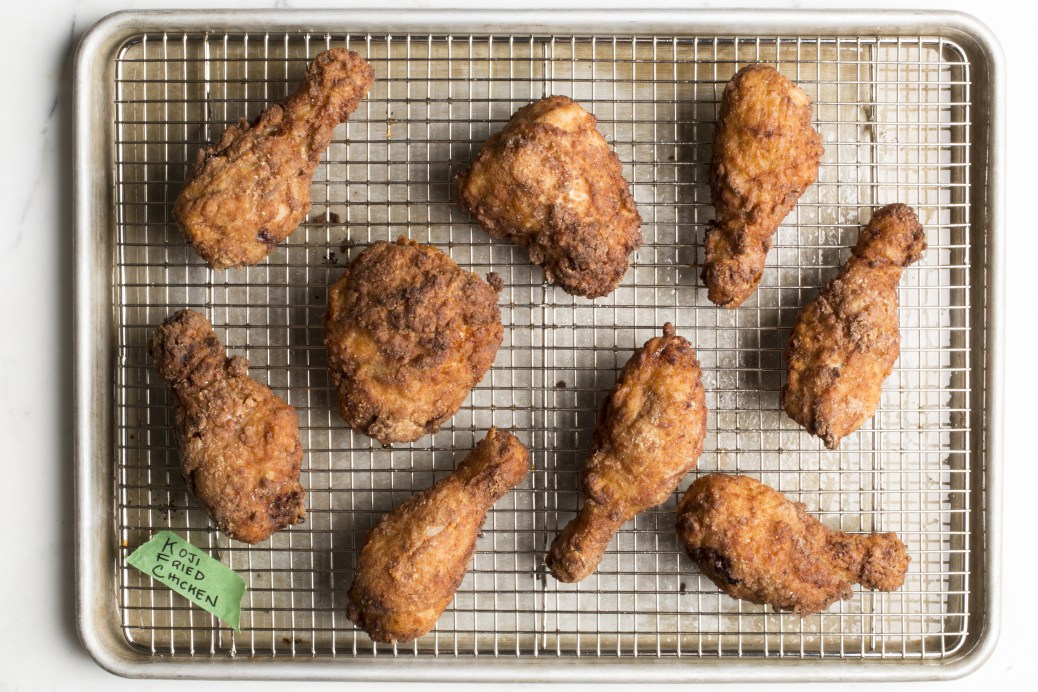
Back to the Test Kitchen
[Ed note: After Cynthia Graber delivered her koji story to the Cook’s Science team, Associate Editor Tim Chin began developing his own recipes for the home cook. The following is from his perspective.]
Coming into this project, my only experience with koji involved marinating and pickling foods in shio koji, a combination of koji rice, water, and salt that is allowed to ferment for at least a week to develop a fruity, sweet, slightly funky aroma. I was a newbie. Culturing koji directly on meats was an idea totally foreign to me, so I decided to nerd out. After talking to our writer Cynthia Graber for some initial ideas, I read as much as I could about inoculation and incubation, traditional and modern techniques, and koji’s deep culinary history. I even joined a koji enthusiast group on Facebook, lurked for a while, and started conversations with fellow koji students. Eventually, I came into semi-regular correspondence with Jeremy Umansky himself—a.k.a. Koji-Wan Kenobi (a self-ascribed, yet fitting nickname). Under his guidance, and after a lot of sketchy-looking mold, I was well on my way “down the rabbit hole,” as those in the koji community like to say.
I divided my development into recipes using shio koji as a marinade and recipes involving culturing koji directly on foods. I started by cooking different meats and fish marinated in various brands of store-bought shio koji. Many of the store-bought brands of shio koji tasted like they were full of fillers—sugar, mirin, sake. Because of that fast-browning sugar, all of my attempts were burnt, and none of them were all that good. As a result, I decided to skip the store-bought stuff and make my own from firm granular rice koji. Luckily, I found a number of high quality, pre-cultured and dried koji rice products available on the web. I ordered them all.
A few weeks of fermentation and goopy rice later, and we had our very own shio koji to use. This stuff was amazing: It was great on its own, or sprinkled straight on eggs or rice. But as a marinade it proved even more valuable. Because shio koji is rich in enzymes called proteases that break down proteins into flavorful amino acids, it quickly tenderized meats, turning them succulent, juicy, and savory. After some initial testing, I settled on developing a fried chicken recipe because 1) I was inspired by Jeremy’s mention of it in his TED talk as well as Angela Dimayuga’s version of it on Munchies 2) I wanted to showcase the radical transformative properties of shio koji and 3) I freaking love fried chicken. And so for the better part of four weeks in development, my team was treated to the juiciest, most sweet-savory and satisfying chicken we’ve had in a while.
While working with shio koji proved successful, my work with inoculation and culturing was mixed—and mostly an exercise in frustration. Adapting a recipe for growing fuzzy mold on something for the home cook is a tough sell no matter how you spin it. But to me, this was where the most interesting and enriching ideas resided, at the frontier of culinary applications for koji. And so I trudged on—motivated by the amazing work that people in the koji community were doing and encouraged by Jeremy’s assurance that, “It’ll grow.”
To successfully incubate koji, I needed to maintain an 86 to 90 degree environment with plenty of humidity. We decided that an immersion circulator mounted on a large bus tub heated to 95 degrees was an efficient way to meet both criteria. If I wrapped the whole setup to create a mostly closed environment, the ambient temperature above the water level was 88 degrees, and the abundance of water ensured plenty of humidity. I was flying blind here, since most modern setups for incubation were pretty janky themselves: Beer coolers, fridges, dehydrators, heating pads, and temperature regulators were all fair game. We wanted to test recipes using a setup that any home cook could rig, so we didn’t go for a muro—the hyper-traditional high-temperature, high-humidity incubation chamber that required hours of TLC.
Some of my coworkers gave me funny looks when I pulled something out of incubation—incredulous at the sight of me examining, cooking, and then gingerly nibbling at a piece of moldy pork. Who in their right mind would eat a box of moldy potatoes or—worse—some rotten looking steaks? But Jeremy kept reassuring me that as long as the koji grew, the food would be good.
And grow it did. After a ton of trial and error, rancidity, and spoilage, I ended up with fuzzy rice, fuzzy meats, and fuzzy vegetables. Some of it was great: The rice was very close to the store-bought granular koji I had been working with, and the vegetables seemed promising. The meats were hit or miss: beef and pork seemed to work, but fish was a no go. Here and there I ran into problems with spoilage, but a quick cure in salt and sugar before inoculating seemed to curb that problem. As of the writing of this article, I’m still working the kinks out for incubation. I don’t yet have a consistent product or process that I am happy with, but as I go along I’m sure I’ll have something amazing—and edible—in the near future. Stay tuned.
Do you use koji at home? We’d love to hear about what you’re doing, eating, and experimenting on. Hit us up on Twitter or Facebook.
Field Photography by Kevin White.
Test Kitchen Photography by Steve Klise.
Food Styling by Elle Simone.